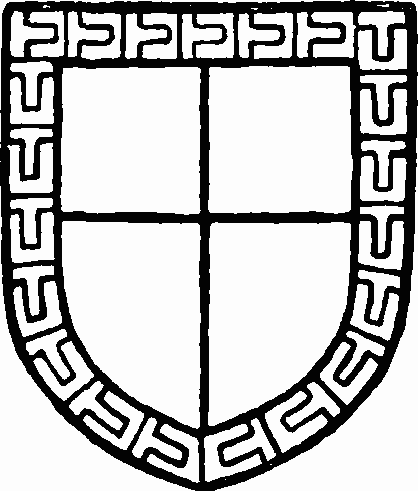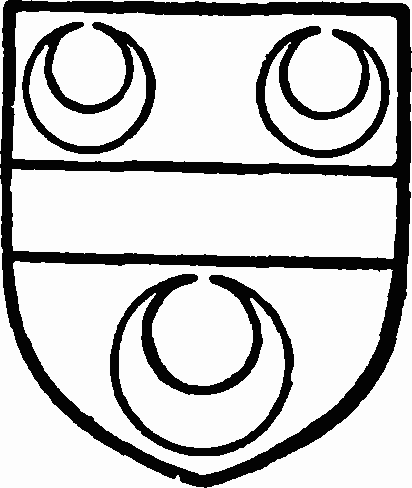A History of the County of Buckingham: Volume 4. Originally published by Victoria County History, London, 1927.
This free content was digitised by double rekeying. All rights reserved.
'Parishes : Quarrendon', in A History of the County of Buckingham: Volume 4, ed. William Page (London, 1927), British History Online https://prod.british-history.ac.uk/vch/bucks/vol4/pp100-102 [accessed 23 April 2025].
'Parishes : Quarrendon', in A History of the County of Buckingham: Volume 4. Edited by William Page (London, 1927), British History Online, accessed April 23, 2025, https://prod.british-history.ac.uk/vch/bucks/vol4/pp100-102.
"Parishes : Quarrendon". A History of the County of Buckingham: Volume 4. Ed. William Page (London, 1927), British History Online. Web. 23 April 2025. https://prod.british-history.ac.uk/vch/bucks/vol4/pp100-102.
In this section
QUARRENDON
Querndon (xiii, xiv cent.); Quoryndon (xiv cent.).
Quarrendon (or Quarrington) is a small and secluded parish with an area of 1,948 acres, of which 54 acres are arable; practically all the remainder is permanent grass, (fn. 1) the grazing lands ranking as the finest in the county. The pasture known as Berryfield is named in the middle 17th century as letting for £800 yearly, the tenant not complaining of his bargain. (fn. 2) Quarrendon is situated in the Vale of Aylesbury, and the land varies in height only from 238 ft. above the ordnance datum on Akeman Street in the south-west of the parish to 290 ft. in the east. The subsoil is Kimmeridge Clay. The Metropolitan railway crosses the south-west corner of the parish. There is no village and the inhabitants are few in number; as far back as 1636 Quarrendon is referred to as 'an ancient enclosure depopulated.' (fn. 3)
The ruins of the church or chapel of St. Peter stand in a small field surrounded by an iron railing in the south-east of the parish. (fn. 4) The church, which dated from the latter half of the 13th century, consisted of a chancel, nave and north and south aisles, but the eastern part of the nave and the whole of the south aisle except two angle buttresses have been destroyed, while all that remains of the chancel is the north-east corner. The remaining part of the east wall of the chancel retains the north jamb of a 15th-century window and a stone corbel, and the north-east angle is supported by a diagonal buttress. The nave had on each side an arcade of three pointed arches of late 13th-century date, but only the westernmost bay on the north and the two western bays on the south now remain; these have octagonal pillars and responds, moulded capitals, and labels with shield stops. In the west wall are the jambs and arch of a large 15th-century window. The north aisle, which is fairly complete with the exception of the east wall, has on the north two 14th-century square-headed windows, originally of two lights, but now wanting both mullions and tracery. The church was altered and decorated by Sir Henry Lee at the end of the 16th century, (fn. 5) but in the early part of the 19th century it was allowed to fall into decay. (fn. 6) The roof was taken to repair the farm-house and cottages near, and the beautiful Lee monuments, which were still extant, although much defaced, in 1817, had disappeared with the remaining fittings of the interior before the middle of the century. (fn. 7)
There are two moats of quadrangular form at Quarrendon, (fn. 8) one at Church Farm, a 17th-century house, the other at the site to the south of the ruined church. Here formerly stood the mansion of the Lees, where Sir Henry Lee entertained Queen Elizabeth for two days in 1592. (fn. 9) It was taken down in the early 18th century. (fn. 10) Upping's Farm, which is referred to in the middle 16th century. (fn. 11) is situated in the extreme north-east of the parish. The present house dates from the 17th century. Leland states that the well of St. Osyth, who is said to have been born at Quarrendon, stood between it and Aylesbury. (fn. 12) Quarrendon suffered severely in the great storm of 1570, when Sir Henry Lee is said to have lost 3,000 sheep besides a great number of cattle and horses. (fn. 13)
Some earthworks east of Church Farm are said to have been thrown up at the time of the Civil War.
Barony
The lands held in Buckinghamshire by the Fitz John (Fitz Geoffrey) family in the middle 13th century formed a barony with Quarrendon as its head. (fn. 14) Peter Carbonel of Mandeville's Manor, Addingtion, Thomas de Valognes of Botolph Claydon, in East Claydon, and Robert Passelewe of Swanbourne were tenants of this honour. At the death of Richard Fitz John in 1297 his lands were split up among his heirs: Maud Countess of Warwick, his eldest sister; Robert Clifford, son of Isabel daughter of Isabel Vipont, his second sister; Idonea daughter of Isabel Vipont; Richard de Burgh Earl of Ulster, son of Aveline, his third sister; and Joan widow of Theobald Butler, his fourth sister; (fn. 15) and Quarrendon Honour does not reappear after this date.

Fitz John. Quarterly or and gules a border vair.
Manor
Under Edward the Confessor Suen, one of Asgar's men, held QUARRENDON MANOR, but could not sell without his lord's consent. (fn. 16) In 1086 it was assessed at 10 hides, and was held of the king in chief by Geoffrey de Mandeville. (fn. 17) The overlordship follows the same descent as Amersham until the death of Humphrey last Earl of Hereford and Essex in 1373. (fn. 18) It evidently formed part of the inheritance of Mary Bohun, his younger daughter and co-heir, (fn. 19) and was brought by her in marriage to Henry Earl of Derby. (fn. 20) She died in 1394, and three years later her husband was created Duke of Hereford, a title which became merged in the Crown on his accession as Henry IV. (fn. 21) A reference to Henry V as his mother's heir occurs in 1421. (fn. 22) This accounts for the apparent inclusion of Quarrendon towards the end of the 15th century under the duchy of Lancaster. (fn. 23) Between 1499 and 1512 it was held by lease from the Crown, (fn. 24) and afterwards in socage. (fn. 25)
The descent of Quarrendon Manor is the same as that of Amersham (q.v.) until 1232, (fn. 26) when temporary seisin of it was given to Roger de Dantes, second husband of Maud Countess of Essex. (fn. 27) She gave it to her half-brother John Fitz Geoffrey (fn. 28) about 1234, (fn. 29) and he later obtained a confirmation from her son Humphrey de Bohun. (fn. 30) The descent of the Fitz Geoffrey or Fitz John family has been traced under Whaddon (fn. 31) (q.v.), and in 1316 Robert Montalt was holding Quarrendon (fn. 32) and Whaddon in right of his wife Emma, widow of Richard Fitz John. In 1332, after Emma's death, Quarrendon passed to Thomas Beauchamp, Earl of Warwick, (fn. 33) to whose grandmother, Maud Countess of Warwick, (fn. 34) the reversion had been assigned in 1299 as eldest sister and co-heir of Richard Fitz John. (fn. 35) The descent of this manor then became identical with that of Hanslope (q.v.) until 1499, when a Crown lease of Quarrendon was granted to Richard Lee, (fn. 36) who had farmed the manor for several years, (fn. 37) and whose family had been connected with Quarrendon for a century. (fn. 38) He died soon afterwards, leaving instructions in his will to be buried in Quarrendon Church before the image of St. George, and his son (fn. 39) and successor Robert, afterwards Sir Robert Lee, on the death of his mother Joan, (fn. 40) obtained a grant of the manor in 1512. (fn. 41) He was sheriff for the county in 1534, (fn. 42) and died in 1539. (fn. 43) His son Anthony, who had been knighted in the previous year, (fn. 44) succeeded, (fn. 45) and on his death in 1549 (fn. 46) was buried at Quarrendon. (fn. 47) He was succeeded by his son Henry, (fn. 48) later Sir Henry Lee, M.P. for the county in 1558 (fn. 49) and 1572, (fn. 50) and champion to Queen Elizabeth, (fn. 51) who gave him a confirmation of Quarrendon Manor in 1602. (fn. 52) He died without issue in 1611 and was succeeded by his cousin Henry Lee, (fn. 53) who was created a baronet in the same year. (fn. 54) He died in 1631, when his son and heir Francis Henry was a minor. (fn. 55) He had attained his majority in 1637 (fn. 56) and died in 1639. (fn. 57) His son Henry had come into his inheritance (fn. 58) in 1657, (fn. 59) and died a year later. (fn. 60) His brother Francis Henry succeeding, (fn. 61) died in 1667. (fn. 62) His son and heir Sir Edward Lee, bart., (fn. 63) was created Earl of Lichfield in 1674, with the second title of Viscount Quarrendon. (fn. 64) This manor remained in the earldom of Lichfield (fn. 65) until the death in 1776 of Robert, the last earl. (fn. 66) It then passed with the Lee estates to his niece Charlotte, widow of Henry Viscount Dillon. (fn. 67) She died in 1794, (fn. 68) and her son and heir Charles twelfth Viscount Dillon, (fn. 69) who had adopted the additional surname of Lee, (fn. 70) conveyed Quarrendon Manor in 1802 to James Du Pre. (fn. 71) His grandson Mr. William Baring Du Pre, M.P., (fn. 72) is the present owner.

Lee of Quarrendon. Argent a fesse between three crescents sable.
View of frankpledge (fn. 73) and free warren (fn. 74) were among the liberties appertaining to this manor. In 1276 John Fitz John, by virtue of a grant from Henry III, made a park at Quarrendon within the forest bounds. (fn. 75)
Advowson
Most of the particulars relating to Quarrendon Church have been already given under Bierton, to which it was an appendant chapel in 1535. (fn. 76) It was included in the list for exemption from the payment of twotenths in 1419. (fn. 77) Regular services ceased during the 18th century, (fn. 78) though the church was still used occasionally, (fn. 79) a burial taking place there as late as 1803. (fn. 80) The vicarage of Quarrendon is annexed to that of Bierton, and the Dean and Canons of Lincoln have been patrons of the living since 1266. (fn. 81)
The great tithes were commuted in 1847 for £555 yearly and leased to the lord of the manor by the Dean and Canons of Lincoln, (fn. 82) who are also holders of the small tithes.
In 1392 John de Farnham, John Smith and John Herbert obtained a licence to endow a chantry in Quarrendon chapel. (fn. 83) The advowson of the chantry belonged to the lords of the manor. (fn. 84)
There do not appear to be any endowed charities subsisting in this parish.